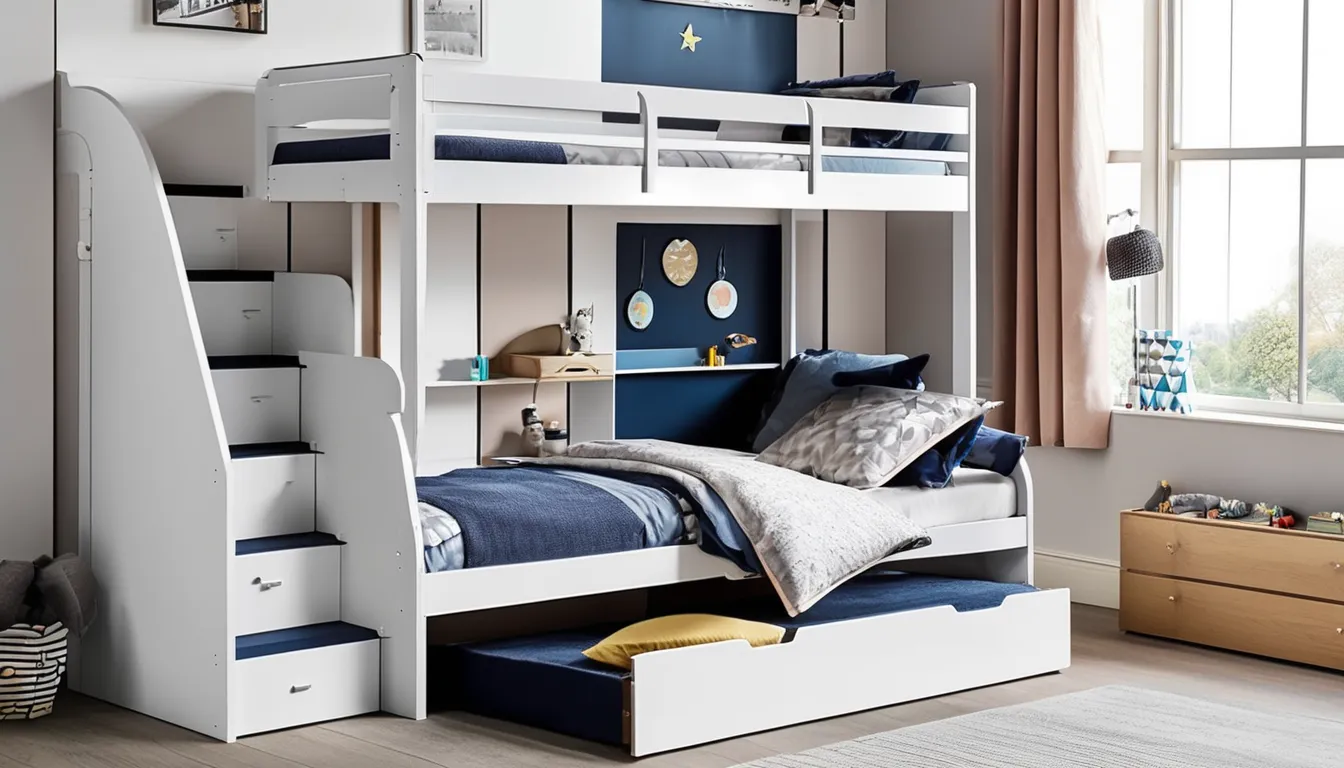When you’re on the hunt for the perfect bed, it’s crucial to think about your unique sleep needs and lifestyle. Whether you’re a side sleeper craving softness or someone who needs firm support for back alignment, your choice can significantly impact your rest. Plus, factors like space and style can’t be overlooked. With so many options out there, you might wonder how to narrow it down to what truly suits you. The right bed can transform your sleep experience, but where do you start? Let’s explore the key elements that can guide your decision.
Understanding Your Sleep Needs
Understanding your sleep needs is crucial for choosing the right bed, as it directly impacts your overall well-being. You need to assess how many hours of sleep you require to feel refreshed. Most 4ft triple bunk bed need between seven and nine hours each night, but individual preferences can vary.
Consider your sleeping position too. If you’re a side sleeper, you might need a softer mattress that cushions your shoulders and hips. If you sleep on your back or stomach, a firmer surface may provide the support you need to maintain proper spinal alignment.
Don’t forget to take your body weight and size into account. Heavier individuals often benefit from more supportive materials that won’t sag over time, while lighter individuals may prefer softer options that conform to their bodies.
Lastly, think about any specific health concerns. Conditions like arthritis or back pain might require specialized mattresses designed for optimal support and comfort.
Types of Beds Available
When it comes to selecting the perfect bed, you’ll find a variety of options designed to fit different lifestyles and preferences.
If you’re after space-saving solutions, consider a loft or bunk bed, which maximizes vertical space and is great for smaller rooms. A platform bed offers a modern, low-profile look and often doesn’t require a box spring, making it a stylish and practical choice.
For those who enjoy a touch of luxury, a canopy bed can transform your bedroom into a cozy retreat, while a four-poster bed adds an elegant, classic touch.
If you often host guests, a sofa bed or daybed can provide extra sleeping space without sacrificing style.
If you prefer a more flexible option, adjustable beds allow you to customize your sleeping position for comfort and health benefits.
Finally, don’t overlook specialty beds like waterbeds or air mattresses, which cater to specific needs or preferences.
Each type of bed has its unique benefits, so think about your lifestyle and space to find the one that’s just right for you.
Choosing the Right Mattress
Selecting the right bed is just the beginning; the mattress you choose plays a significant role in your overall sleep quality. A good mattress can enhance comfort, support, and even your health.
Here are three key factors to consider when making your choice:
- Firmness Level: Think about your sleeping position. Side sleepers often benefit from a softer mattress that cushions the hips and shoulders, while back and stomach sleepers may prefer a firmer option for proper spinal alignment.
- Material: Consider the different materials available. Memory foam provides excellent contouring and pressure relief, while innerspring mattresses offer more bounce and airflow. Hybrid options combine both for a balanced feel.
- Durability: A mattress is an investment, so look for quality materials that will withstand wear over time. Research warranties and customer reviews to gauge long-term performance.
Space Considerations
Having enough space in your bedroom is crucial for creating a comfortable sleep environment. When choosing a bed, consider the dimensions of your room. You’ll want to measure the area where you plan to place the bed to ensure it fits without crowding the space.
Ideally, you should leave at least two feet of walking space on either side for easy access.
Think about the type of bed that suits your lifestyle and available space. If you have a small room, a twin or full-size bed might be more appropriate. For larger spaces, a queen or king-size bed can offer additional comfort.
Don’t forget to account for other furniture—nightstands, dressers, or chairs—so the room doesn’t feel cramped.
Also, consider the height of your bed. Some beds sit lower to the ground, which can create an open feel in smaller rooms. Others, like platform beds or those with storage underneath, can maximize your space.
Decor and Style Integration
Creating a harmonious bedroom involves more than just choosing the right bed; it’s about integrating decor and style to reflect your personal taste.
To achieve this, consider these three key elements:
- Color Palette: Choose a color scheme that resonates with you. Soft, neutral tones can create a calming atmosphere, while bold colors can energize your space.
- Textiles and Patterns: Mix and match fabrics that complement your bed and overall theme. Layering textures through bed linens, cushions, and throws adds depth and comfort.
- Accent Pieces: Incorporate decorative items like artwork, lamps, or plants that speak to your style.
These accents can tie the room together and make it feel uniquely yours.
Conclusion
Finding the right bed is all about understanding your unique sleep needs and lifestyle. By considering your preferred sleeping position, mattress firmness, and the space you have available, you can narrow down your options. Don’t forget to think about how your bed fits with your decor style, too. With the right choices, you’ll create a cozy and inviting sleep environment that enhances your overall well-being, making every night’s rest more rejuvenating and enjoyable.


